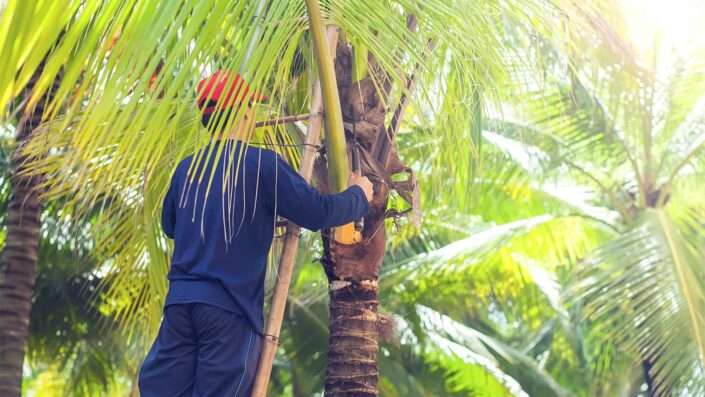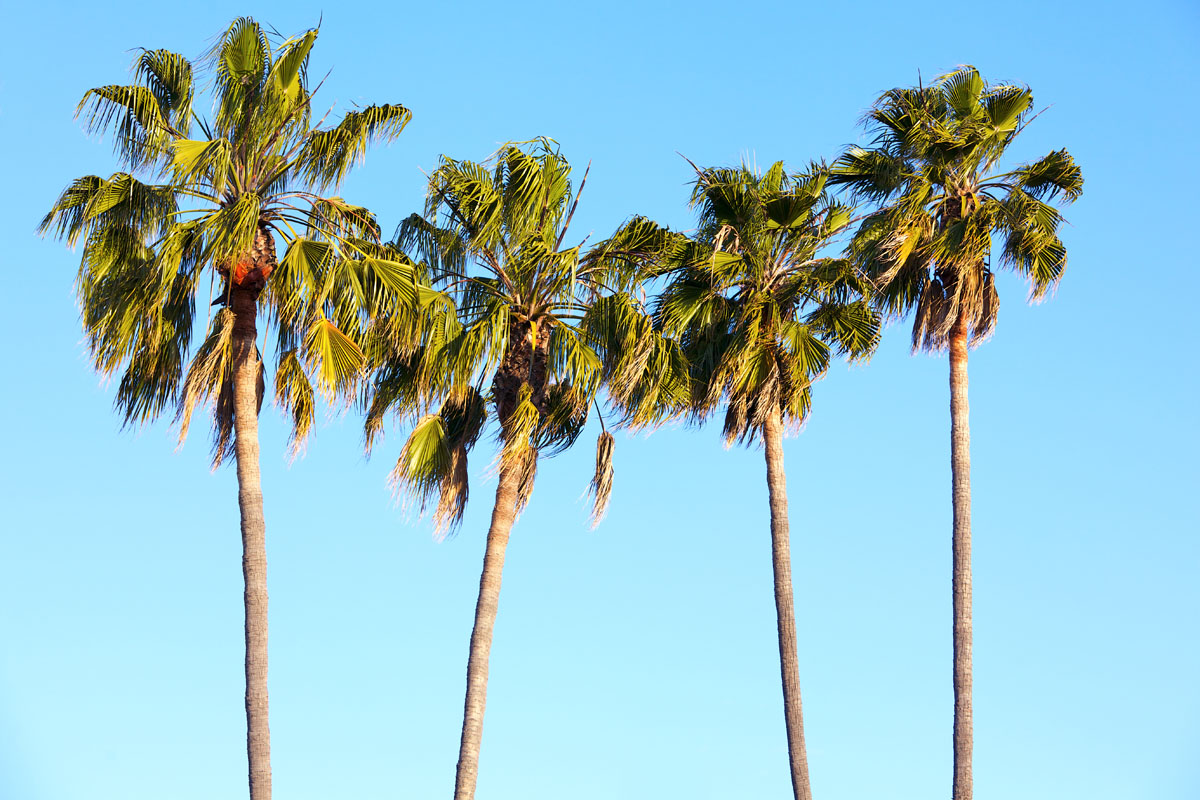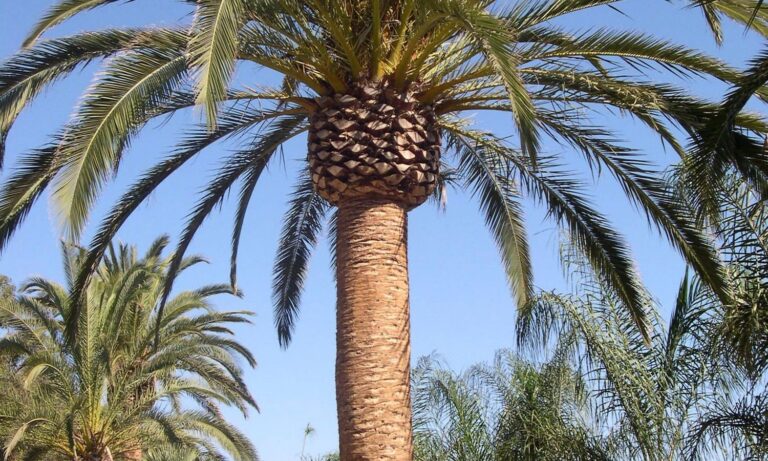Pruning palm trees is an essential part of maintaining the health and aesthetics of your trees. When it comes to caring for these beautiful plants, pruning is a necessary step that ensures their longevity and beauty.
Pruning helps keep palms healthy by removing dead or diseased fronds, promoting new growth, and providing enough light to reach each leaf. It also helps shape the trees into an aesthetically pleasing form as well as controlling size and density. This guide will provide you with tips on how to safely prune your palm tree so that it looks great while remaining in optimal condition!
Benefits of Pruning Your Palm Trees
Pruning a palm tree is an important part of maintaining its health and aesthetic. This process can be beneficial in a variety of ways, from improving a tree’s appearance to promoting new growth. Pruning often removes dead or diseased branches and fronds that could otherwise spread disease, while also helping to create a more symmetrical shape for the tree.
Additionally, pruned palms will require less frequent fertilization since the plant is no longer wasting energy on dead elements. The removal of damaged fronds can also help increase airflow around the leaves, reducing pest populations and providing better light access which helps promote healthy growth. Overall, regular pruning provides many benefits and helps ensure that your palm trees remain healthy and beautiful for years to come!
Preparing for Pruning: Essential Supplies and Tips

Pruning palm trees can be a daunting task, but with the right supplies and tips, it doesn’t have to be. Before you start pruning your palms, make sure you have all the necessary tools at hand. Pruning shears or loppers are essential for removing dead branches and leaves from your tree, while a saw is needed for larger branches.
For optimal safety, use a ladder to reach higher parts of the tree and wear gloves to protect your hands from sharp edges. You should also remember that when it comes to cutting off fronds or leaves never cut them back more than one-third of their length as this will prevent overpruning. Finally, if youre unsure about what needs to be done then seek professional advice so they can help ensure your trees remain healthy and aesthetically pleasing in the long run.
Techniques for Properly Pruning Your Palm Trees
Pruning your palm trees is an important part of keeping them healthy and aesthetically pleasing. There are several techniques you can use to achieve the best results, depending on what type of palm tree you have. For fan palms like Queen or Mexican Fan Palms, its important to remove dead leaves from the bottom of the canopy as well as prune off any flower stalks that may be present. This will help promote new growth in a more balanced way and increase air circulation around the trunk. When cutting away old fronds, make sure not to cut too close to the center so as not to damage any future growth.
Another type of palm tree is a pinnate leafed variety such as King Palm or Foxtail Palms which require a different approach when pruning because they maintain their foliage in a V-shape formation at their crowns. It’s important here not to remove too many leaves at once since this could cause stunted regrowth later on; instead, focus on removing only brown or yellowing foliage while leaving green fronds intact for better health benefits down the line.
Additionally, don’t forget about trimming off any seedpods that may appear during certain times of year – these can weigh down branches and detract from how beautiful your trees look! In general, it’s best practice when pruning all kinds of palms (including fishtail-style varieties) is never to take off large amounts at one time; instead, work slowly over several months if possible so that your trees have time to adjust and heal between cuts while still being able to retain some shapely structure when finished with all trimmings completed!
Maintaining Healthy Palms After Pruning

Once you have pruned your palm trees, maintaining their health and aesthetic look is of the utmost importance. To ensure this, there are a few key points to consider when it comes to caring for them in the weeks after pruning.
- First, be sure to check for any signs of stress or damage that may have been caused by the process. Look out for discolored fronds (leaves) or yellowing spots on the stems as both can indicate an issue with water uptake or poor nutrition. If any such signs appear, consult a professional immediately and follow their advice accordingly.
- Second, remember that palms are shallow-rooted plants and therefore require frequent watering in order to stay hydrated and healthy. Monitor soil moisture levels regularly throughout summer months especially – if they begin to feel dry then add some extra H2O! Additionally avoid using too much fertilizer as this can cause excessive growth which will only lead to further pruning needs down the line. Instead, opt for small doses of slow-release fertilizers during springtime when new leaves start appearing on your tree(s).
- Finally don’t forget about pest control – keep an eye out for any unwelcome critters such as scales or mealybugs who might try to set up a home in your palms foliage! A good insecticidal soap spray should do the trick but again seek guidance from professionals if unsure how best to proceed – ensuring that both safety recommendations and local regulations are taken into account before applying.
Common Questions About Pruning Palm Trees
- What tools should I use to prune my palm trees? – Pruning your palm tree requires the right tools for the job. The most common tool used is a pair of pole pruners or bypass loppers, along with a handsaw if needed. You may also need an extension ladder and safety harness in order to reach higher branches on taller palms.
- How often do I need to prune my palms? – Regularly scheduled maintenance is key when it comes to keeping your palm trees healthy and looking great over time. Most experts recommend trimming fronds once per year during the growing season, while larger jobs such as crown reduction can be done less frequently, around every three years or so depending on how quickly the tree grows back its foliage.
- Can I remove dead fronds at any time of the year? – Yes! Dead fronds should be removed promptly as they can become breeding grounds for pests and diseases that could spread to other parts of your tree or garden area. It’s best practice to remove dead fronds no matter what time of year it is – just make sure you are wearing protective gloves and eye protection while handling sharp blades near potentially dangerous branches!


